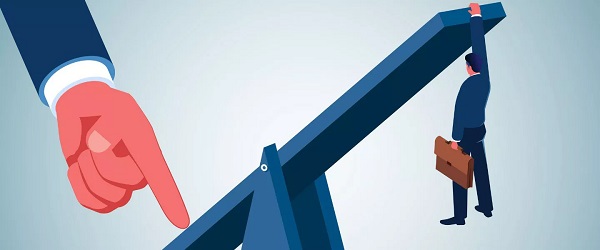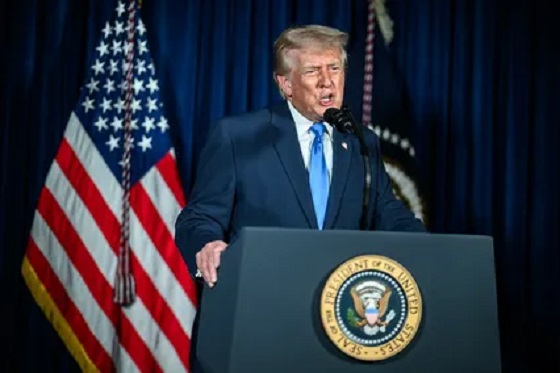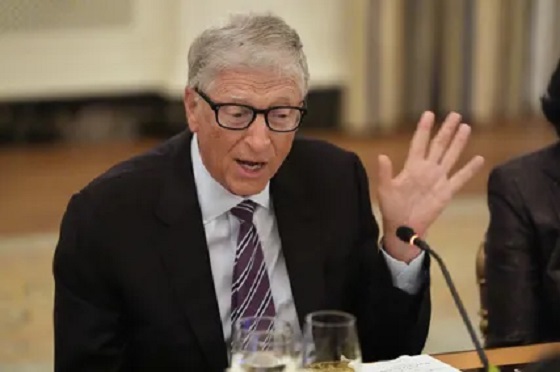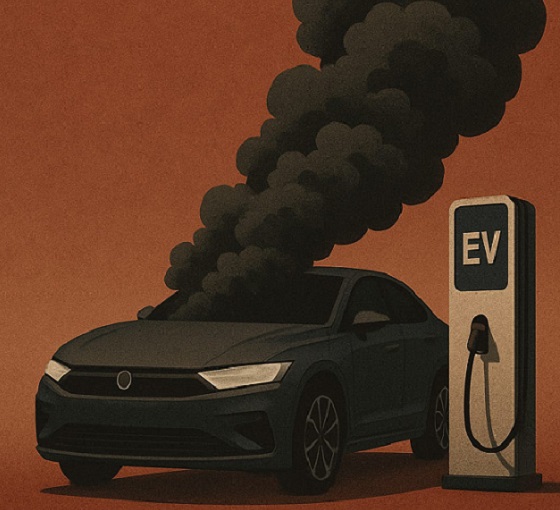Business
Economics professor offers grossly misleading analysis of inequality in Canada

From the Fraser Institute
By: Philip Cross
Dalhousie economics professor Lars Osberg’s The Scandalous Rise of Inequality in Canada was published just in time to be eligible for the always hotly-contested title of worst Canadian economics book of the year.
Osberg’s central theme is that inequality in Canada has been steadily increasing and this poses a threat to economic growth, financial stability, social mobility, limiting climate change and even democracy—at times, it seems every imaginable problem is blamed on inequality. This makes it even more important to get the facts about inequality right.
The most misleading chapter in the book concerns top-income earners. Osberg claims that “the income share of the top 1 per cent… is the aspect of inequality that has changed the most in recent years.” However, the chapter on inequality at the top of the income distribution exclusively features data for its increase in the United States, driven by the outrageous success of technology firms such as Facebook, Apple, Alphabet, Microsoft and Nvidia. Nowhere is the data for Canada cited, but in fact the 1 per cent’s share of income in Canada has fallen since 2007, which probably explains why Osberg avoided it.
The real problem with Canada’s high-income earners over the last two decades is not that they’re gobbling up more income at the expense of everyone else, but that we do not have enough of them. Nor do the top 1 per cent in Canada earn nearly as much as in the U.S. Pretending that incomes in Canada are as skewed as in the U.S. is another example of importing narratives without examining whether they are applicable here. This might be forgivable for the average person, but it’s scandalous and disingenuous for a professor specializing in income distribution.
Raising taxes on the richest 1 per cent has a “populist” appeal. However, former finance minister Bill Morneau wrote in his memoire Where To From Here: A Path to Canadian Prosperity that he came to “regret supporting the idea of a tax increase on the 1 percent” because “it began a narrative that made it difficult to have a constructive dialogue with the people prepared to invest in research and development to benefit the country… our proposal’s biggest impact was to reduce business confidence in us.” Before becoming the Trudeau government’s current finance minister, Chrystia Freeland acknowledged that “many of the ultra-high net-worth individuals flourishing in today’s global economy are admirable entrepreneurs, and we would all be poorer without them.”
Another practical consideration for Morneau was that “Canada’s personal income tax rates are not competitive with the U.S. where highly skilled labour is concerned.” Finally, Morneau acknowledged that taxing the rich in Canada will not raise much money, because “the number of taxpayers affected will be quite small… the math just doesn’t work.” I calculate that confiscating all of the income the 1 per cent earn above $200,000 would fund total government spending in Canada for a paltry 44.2 days.
Besides misrepresenting the importance of Canada’s 1 per cent, Osberg twice makes the patently false claim in his book that “income from capital… is roughly half of GDP in Canada.” Just last week, Statistics Canada’s estimated labour income’s share of GDP was 51.3 per cent while corporate profits garnered 26.0 per cent (including profits reaped by government-owned businesses through their monopolies on utilities, gambling and alcohol sales). Another 12.6 per cent of GDP was mixed income earned by farmers and small businesses, which StatsCan cannot disentangle between labour and capital. The final 10.2 per cent of GDP went to government taxes on production and imports, which clearly is not a return on capital. I would expect undergraduate economic students to have a better grasp of the distribution of GDP than Osberg demonstrates.
Among the many evils generated by inequality, Osberg cites democracy as “threatened by the increasing concentration of wealth and economic power in Canada.” Osberg must believe Justin Trudeau’s decade-long tenure as prime minister reflects the choice of our economic elites. If so, they have much to answer for; besides steadily-degrading Canada’s economic performance and international standing, Trudeau attacked these same elites by raising income taxes on upper incomes, increasing the capital gains tax, and undercutting the fortunes of the oil and gas industry on which much wealth relies. If our economic elite really controls government, it seems they made an incredibly bad choice for prime minister.
Business
White House declares inflation era OVER after shock report

The White House on Thursday declared a decisive turn in the inflation fight, pointing to new data showing core inflation has fallen to its lowest level in nearly five years — a milestone the administration says validates President Donald Trump’s economic reset after inheriting what it calls a historic cost-of-living crisis from the Biden era. In a statement accompanying the report, White House Press Secretary Karoline Leavitt said inflation “came in far lower than market expectations,” drawing a sharp contrast with the 9 percent peak under President Joe Biden and arguing the numbers reflect sustained relief for American households. “Core inflation is at a new multi-year low, as prices for groceries, medicine, gas, airfare, car rentals, and hotels keep falling,” Leavitt said, adding that lower prices and rising paychecks are expected to continue into the new year.
According to the White House, core inflation — widely viewed by economists as the most reliable gauge because it strips out volatile food and energy costs — is now down roughly 70 percent from its Biden-era high. Officials noted that if inflation continues at the pace of the last two months, it would be running at an annualized rate of about 1.2 percent, well below the Federal Reserve’s 2 percent target. The report also highlighted broad-based price moderation across consumer staples and services, with declines in groceries, dairy, fruits and vegetables, prescription drugs, clothing, airfares, natural gas, car and truck rentals, and hotel prices. Average gas prices have fallen to multi-year lows, while rent inflation has dropped to its lowest level since October 2021, a shift the administration attributes in part to tougher enforcement against illegal immigration and reduced pressure on housing demand.
Wages, the White House says, are rising alongside easing prices. Private-sector workers are on track to see real wages increase by about $1,300 in President Trump’s first full year back in office, clawing back purchasing power lost during the inflation surge of the previous administration. Gains are strongest among blue-collar workers, with annualized real earnings up roughly $1,800 for construction workers and $1,600 for manufacturing employees. Administration officials also took aim at critics who warned Trump’s tariff policies would reignite inflation, arguing the data shows no demonstrable inflationary impact despite repeated predictions from Wall Street and academic economists.
NEC Director Kevin Hassett on the latest inflation report: "It was just an absolute blockbuster report… We looked at 61 forecasts, and this number came in better than every single one of them." 🔥 pic.twitter.com/rBJpkmjuNa
— Rapid Response 47 (@RapidResponse47) December 18, 2025
Even commentators across the media spectrum acknowledged the strength of the report. CNBC’s Steve Liesman called it “a very good number,” while CNN’s Matt Egan said it was “another step in the right direction.” Harvard economist Ken Rogoff described the reading as “a better number than anyone was expecting,” adding, “There’s no other way to spin it.” Bloomberg’s Chris Anstey noted the figure came in two-tenths below the lowest estimate in a survey of 62 economists, calling it “remarkable,” while The Washington Post’s Andrew Ackerman wrote that inflation “cooled unexpectedly,” easing pressure on household budgets.
For the White House, the message was blunt: the inflation era is over. Officials framed Thursday’s report as proof that Trump has followed through on his promise to defeat the cost-of-living crisis he inherited, laying what they called the groundwork for a strong year ahead. As the president told the nation this week, the administration insists the progress is real — and that, in his words, the best is yet to come.
Automotive
Ford’s EV Fiasco Fallout Hits Hard


From the Daily Caller News Foundation
I’ve written frequently here in recent years about the financial fiasco that has hit Ford Motor Company and other big U.S. carmakers who made the fateful decision to go in whole hog in 2021 to feed at the federal subsidy trough wrought on the U.S. economy by the Joe Biden autopen presidency. It was crony capitalism writ large, federal rent seeking on the grandest scale in U.S. history, and only now are the chickens coming home to roost.
Ford announced on Monday that it will be forced to take $19.5 billion in special charges as its management team embarks on a corporate reorganization in a desperate attempt to unwind the financial carnage caused by its failed strategies and investments in the electric vehicles space since 2022.
Cancelled is the Ford F-150 Lightning, the full-size electric pickup that few could afford and fewer wanted to buy, along with planned introductions of a second pricey pickup and fully electric vans and commercial vehicles. Ford will apparently keep making its costly Mustang Mach-E EV while adjusting the car’s features and price to try to make it more competitive. There will be a shift to making more hybrid models and introducing new lines of cheaper EVs and what the company calls “extended range electric vehicles,” or EREVs, which attach a gas-fueled generator to recharge the EV batteries while the car is being driven.
Dear Readers:
As a nonprofit, we are dependent on the generosity of our readers.
Please consider making a small donation of any amount here.
Thank you!
“The $50k, $60k, $70k EVs just weren’t selling; We’re following customers to where the market is,” Farley said. “We’re going to build up our whole lineup of hybrids. It’s gonna be better for the company’s profitability, shareholders and a lot of new American jobs. These really expensive $70k electric trucks, as much as I love the product, they didn’t make sense. But an EREV that goes 700 miles on a tank of gas, for 90% of the time is all-electric, that EREV is a better solution for a Lightning than the current all-electric Lightning.”
It all makes sense to Mr. Farley, but one wonders how much longer the company’s investors will tolerate his presence atop the corporate management pyramid if the company’s financial fortunes don’t turn around fast.
To Ford’s and Farley’s credit, the company has, unlike some of its competitors (GM, for example), been quite transparent in publicly revealing the massive losses it has accumulated in its EV projects since 2022. The company has reported its EV enterprise as a separate business unit called Model-E on its financial filings, enabling everyone to witness its somewhat amazing escalating EV-related losses since 2022:
• 2022 – Net loss of $2.2 billion
• 2023 – Net loss of $4.7 billion
• 2024 – Net loss of $5.1 billion
Add in the company’s $3.6 billion in losses recorded across the first three quarters of 2025, and you arrive at a total of $15.6 billion net losses on EV-related projects and processes in less than four calendar years. Add to that the financial carnage detailed in Monday’s announcement and the damage from the company’s financial electric boogaloo escalates to well above $30 billion with Q4 2025’s damage still to be added to the total.
Ford and Farley have benefited from the fact that the company’s lineup of gas-and-diesel powered cars have remained strongly profitable, resulting in overall corporate profits each year despite the huge EV-related losses. It is also fair to point out that all car companies were under heavy pressure from the Biden government to either produce battery electric vehicles or be penalized by onerous federal regulations.
Now, with the Trump administration rescinding Biden’s harsh mandates and canceling the absurdly unattainable fleet mileage requirements, Ford and other companies will be free to make cars Americans actually want to buy. Better late than never, as they say, but the financial fallout from it all is likely just beginning to be made public.
- David Blackmon is an energy writer and consultant based in Texas. He spent 40 years in the oil and gas business, where he specialized in public policy and communications.
-

 Alberta2 days ago
Alberta2 days agoCanada’s New Green Deal
-

 Business2 days ago
Business2 days agoCanada’s recent economic growth performance has been awful
-

 armed forces2 days ago
armed forces2 days agoOttawa’s Newly Released Defence Plan Crosses a Dangerous Line
-

 Alberta2 days ago
Alberta2 days agoAlberta’s huge oil sands reserves dwarf U.S. shale
-

 Health2 days ago
Health2 days agoSaskatchewan woman approved for euthanasia urged to seek medical help in Canada rather than US
-

 Indigenous2 days ago
Indigenous2 days agoResidential school burials controversy continues to fuel wave of church arsons, new data suggests
-

 Health2 days ago
Health2 days agoCanadian gov’t considers sharing census data on gender-confused children
-

 Business2 days ago
Business2 days agoCOP30 finally admits what resource workers already knew: prosperity and lower emissions must go hand in hand







